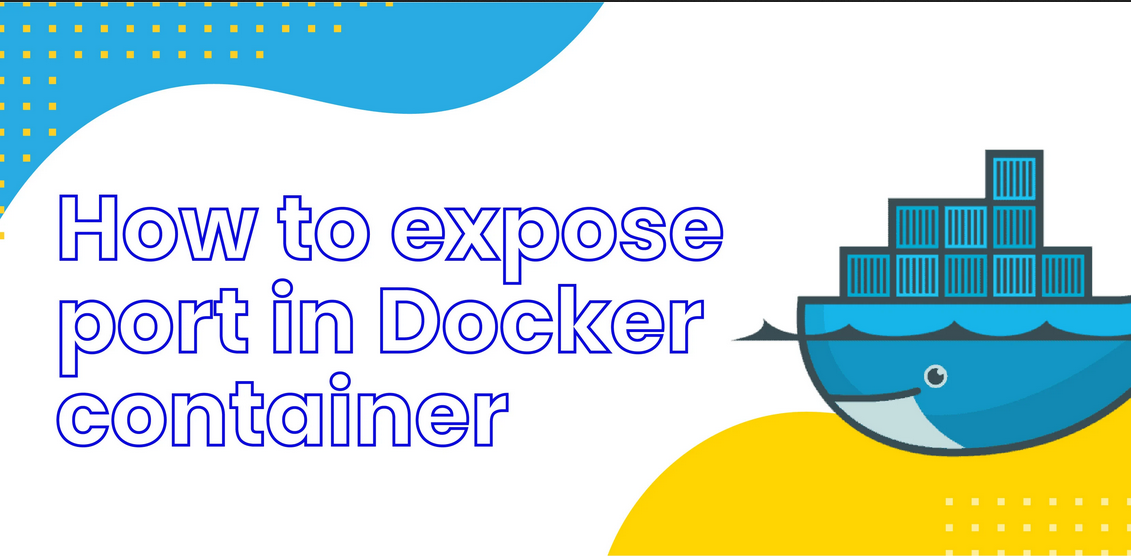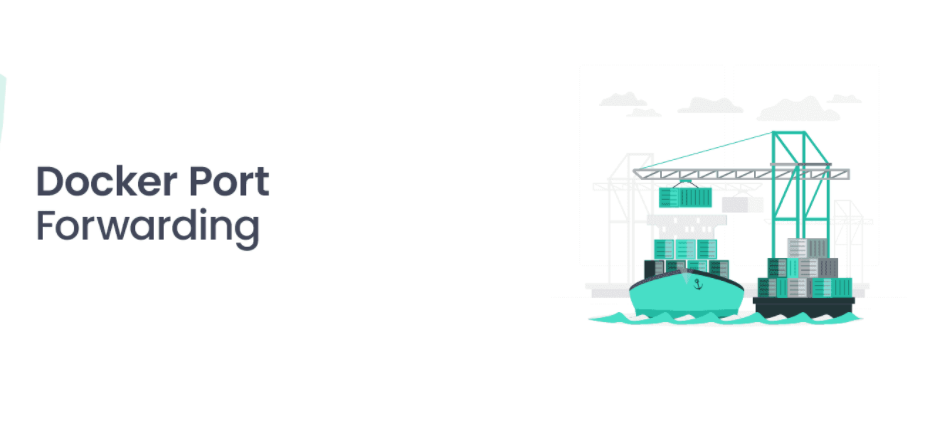Case Study: Implementing Port Forwarding with Docker.
 Abhay Dandge
Abhay Dandge
Port forwarding is a fundamental aspect of networking that allows external devices to communicate with a specific application or service running on a host machine. In the context of Docker, port forwarding enables containers to be accessible from outside the host machine. This case study explores the implementation of port forwarding with Docker, demonstrating its importance and practical applications.
Background
Docker containers are isolated environments that run applications and their dependencies. By default, these containers are not accessible from the host machine's network unless specific ports are forwarded. Port forwarding allows services running inside Docker containers to be accessible via the host machine's IP address and specified ports.

Objective
The objective of this case study is to demonstrate how to implement port forwarding with Docker to expose a web application running inside a container to the outside world.
Port forwarding in Docker plays a crucial role in enabling communication between containers and the host system or between containers themselves. In this case study, we'll explore how to set up port forwarding for Apache HTTP Server (httpd) and Ngnix containers.
Understanding Port Forwarding
Port forwarding involves mapping a port on the host machine to a port inside a Docker container. This mapping allows external clients to access services running inside the container. The syntax for port forwarding in Docker is -p [host_port]:[container_port].
For example, if a web server inside a container listens on port 80, you can map this to port 8080 on the host machine using -p 8080:80. Clients can then access the web server via http://localhost:8080.
Real-World Example
Example 1: Running Apache HTTP Server Inside a Docker Container
Scenario: A web developer wants to run a website using Apache HTTP Server inside a Docker container and access it from the host system's web browser.
Implementation:
1. Run the Docker Container with Port Forwarding:
docker run -dit --name=webserver -p 8080:80 httpd
Access the Apache Server:
Open a web browser on the host system and navigate to http://localhost:8080 to access the website served by the Apache HTTP Server running inside the Docker container.
Example 2: Running Ngnix Inside a Docker Container
Scenario: An organization wants to deploy a website using NGINX inside a Docker container and ensure it is accessible from the host system's web browser.
Implementation:
1.Run the Docker Container with Port Forwarding::
docker run -d --name=ng -p 9090:80 nginx
2. Access the NGINX Server:
Open a web browser on the host system and navigate to http://localhost:9090 to access the website served by NGINX running inside the Docker container.
Conclusion
Port forwarding is a fundamental technique in Docker that enhances the functionality and accessibility of containerized applications. By mapping container ports to host machine ports, you enable seamless interaction between services and clients. This case study demonstrated the process using an Nginx web server, highlighting the simplicity and effectiveness of port forwarding in Docker.
Implementing port forwarding effectively can significantly improve the deployment and management of your Dockerized applications, ensuring they are accessible, secure, and performant.
References
Here are some useful references to help you further understand and implement port forwarding with Docker:
References
Here are some useful references to help you further understand and implement port forwarding with Docker:
These resources provide a solid foundation for understanding and implementing port forwarding in Docker, ensuring your containerized applications are accessible and secure.
Subscribe to my newsletter
Read articles from Abhay Dandge directly inside your inbox. Subscribe to the newsletter, and don't miss out.
Written by

Abhay Dandge
Abhay Dandge
Hello, I'm Abhay, a DevOps Engineer passionate about optimizing operations through automation, continuous integration, and deployment. Over the past year, I've sharpened my skills in the fast-paced world of DevOps and Cloud Computing. My journey has been defined by hands-on experience and a commitment to exploring the latest technologies. ╭━━━╮╱╱╱╱╱╭━━━╮ ╰╮╭╮┃╱╱╱╱╱┃╭━╮┃ ╱┃┃┃┣━━┳╮╭┫┃╱┃┣━━┳━━╮ ╱┃┃┃┃┃━┫╰╯┃┃╱┃┃╭╮┃━━┫ ╭╯╰╯┃┃━╋╮╭┫╰━╯┃╰╯┣━━┃ ╰━━━┻━━╯╰╯╰━━━┫╭━┻━━╯ ╱╱╱╱╱╱╱╱╱╱╱╱╱╱┃┃ ╱╱╱╱╱╱╱╱╱╱╱╱╱╱╰╯⠀⠀⠀⠀⠀⠀⠀⠀⠀⠀⠀⠀⠀⠀⠀⠀⠀⠀⠀⠀⠀⠀⠀ In my tech toolkit, I’ve got the skills to make things run smoother: containerization, cloud platforms, and flawless CI/CD pipelines. My goal? To supercharge software delivery for organizations, making it faster and more efficient, all while keeping things top-notch and rock-solid. Let’s keep it cool and reliable! 🅃🄴🄲🄷 🅂🅃🄰🄲🄺 🔲 Cᴏɴᴛᴀɪɴᴇʀɪᴢᴀᴛɪᴏɴ -: Dᴏᴄᴋᴇʀ | Pᴏᴅᴍᴀɴ | Bᴜɪʟᴅᴀʜ | CᴏɴᴛᴀɪɴᴇʀD 🔲 Cᴏɴᴛᴀɪɴᴇʀ Oʀᴄʜᴇsᴛʀᴀᴛɪᴏɴ -: Kᴜʙᴇʀɴᴇᴛᴇs | Dᴏᴄᴋᴇʀ Sᴡᴀʀᴍ 🔲 Cʟᴏᴜᴅ Pʟᴀᴛғᴏʀᴍs -: AWS 🔲 Aᴜᴛᴏᴍᴀᴛɪᴏɴ ᴀɴᴅ Sᴄʀɪᴘᴛɪɴɢ-: Bᴀsʜ, Pʏᴛʜᴏɴ * Linux Administration (RHCSA) 🔴 * DevOps methodologies. * CLA (Certified Linux Admin) * CCA (Certified Container Admin) -̶-̶-̶-̶-̶-̶-̶-̶-̶-̶-̶-̶-̶-̶-̶-̶-̶-̶-̶-̶-̶-̶-̶-̶-̶-̶-̶-̶-̶-̶-̶-̶-̶-̶-̶-̶-̶-̶-̶-̶-̶-̶-̶-̶-̶-̶-̶-̶-̶-̶-̶-̶-̶-̶-̶-̶-̶-̶-̶-̶-̶-̶-̶-̶-̶-̶-̶-̶-̶-̶-̶-̶-̶-̶-̶-̶-̶-̶-̶-̶-̶-̶-̶-̶-̶-̶-̶-̶-̶-̶-̶-̶-̶-̶-̶-̶-̶-̶-̶-̶-̶-̶- How can I help you? I can help you with the optimization and scalability of your infrastructure with my expertise in Linux, Containers, AWS, and orchestration. From streamlining deployments with Docker and Kubernetes to maximizing cloud efficiency, I'll ensure your systems are robust and scalable. Let's tackle your challenges and take your projects to the next level. Let's connect and discuss how we can collaborate! :) -̶-̶-̶-̶-̶-̶-̶-̶-̶-̶-̶-̶-̶-̶-̶-̶-̶-̶-̶-̶-̶-̶-̶-̶-̶-̶-̶-̶-̶-̶-̶-̶-̶-̶-̶-̶-̶-̶-̶-̶-̶-̶-̶-̶-̶-̶-̶-̶-̶-̶-̶-̶-̶-̶-̶-̶-̶-̶-̶-̶-̶-̶-̶-̶-̶-̶-̶-̶-̶-̶-̶-̶-̶-̶-̶-̶-̶-̶-̶-̶-̶-̶-̶-̶-̶-̶-̶-̶-̶-̶-̶-̶-̶-̶-̶-̶-̶-̶-̶-̶-̶-̶-̶-̶-̶-̶-̶-̶-̶-̶-̶-̶-̶-̶- ………………………………………………………………… #devops #devsecops #sre